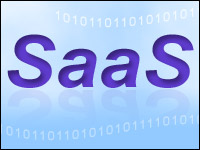
What exactly is cloud computing? The question just doesn’t go away, and as the year starts, SugarCRM has just released a white paper — “The Sugar Open Cloud” — offering its definition and its argument for why its vision is superior. I am not sure about either.
Full disclosure: I like SugarCRM and have a lot of respect for what they are trying to do. The idea of open source CRM is very appealing and can be very successful — like open source operating systems (think Linux), open encyclopedias (like Wikipedia) and open source Web servers like Apache. All of these open source products are very good in their own right and highly sought-after. Let me give just one example of open source success: Apache has 52 percent of the market for Web server software.
In his new book, Drive: The Surprising Truth About What Motivates Us, Daniel Pink says that one of the key values to those who contribute to open source technology is the sense of accomplishment that goes with participating in a project whose goal is the greater good, to solving a really tough problem. To this idea, I would also add customers leveraging products like Salesforce’s Service Cloud to provide accurate support aid to their fellows using social media, search, email and other modern technologies. They get no pay other than to stamp their name on a solution, and that’s a surprisingly effective motivator.
Money Talks
The only issue I have with open source is the business model and how you make money with it. Well, how do you make money with it? It’s a question that has vexed me and probably a lot of B-school kids, professors and practitioners for a long time. The psychic rewards are good, but they just aren’t enough.
It is with this frame of mind that I read the Sugar white paper. The paper says that we have entered the third phase of the evolution of whatever you wish to call “SaaS” (Software as a Service). First there was the ASP model that crashed and burned for economic reasons — you couldn’t get enough client-server users onto a server to be cost effective. Then there was multi-tenant SaaS, which has had our attention for the first decade of the century. Now, according to Sugar, there’s “multi-instance distributed SaaS.”
According to the paper, the multi-instance version is superior for many of the reasons we heard when multi-instance went by the name of “hybrid,” such as you could deploy it in an on-demand way (single or multi-tenant) or in a traditional premise-based configuration. What’s different with multi-instance is the freedom to pick your infrastructure provider, and here the waters get murky.
Sugar claims its solution is superior because it enables users to choose which servers the applications run on, such as Microsoft Azure or Amazon EC2. This is superior to vendor lock-in, according to the paper, which makes the incredible and self-contradicting claim, “In the first phases of SaaS (ASP and multi-tenant SaaS models) customers had no options around who hosted their business applications as the software vendor was the only service provider.”
No Options?
Really? Two pages earlier the paper displays a table of data titled “The ASP Model,” and the bottom row lists Key Providers as Corio and USi. I was a CRM analyst (still am) when those companies roamed the earth, and neither one was a software house. The big dog in that period was Siebel, and they didn’t care who hosted their product.
Sugar makes the point that cloud computing is becoming an indeterminate term, meaning that the definition is set in Jell-O. That’s fair. The cloud needs to have three parts — Infrastructure as a Service (IaaS), SaaS and now a development platform, PaaS. Companies that want to offer infrastructure or software only or to cobble together best-of-breed clouds are free to do so, and I am sure you can get a lot of value that way, though you will need to invest more effort and cash to accomplish your own integration. But don’t worry, there’s an (Sugar Cloud Console) app for that.
New Business Processes
What concerns me about all this is what manages to not be said. Cloud computing is largely an economic issue, and a necessity at that. It’s about a great deal more than lowering the cost of computing so that a larger audience in emerging markets can access technology, and it is certainly about more than where data is stored. From what I have seen about hackers stealing sensitive data, corporate IT departments are the last place I feel comfortable storing my personal information.
Cloud computing is not about the tired arguments about where data is stored or the “freedom” to move it from one vendor to another — that base has been covered. The cloud is about ubiquity of computing access, and that’s an economic driver. Historically, when computing power has become abundant and cheap, innovations such as relational databases, the graphical user interface and the Internet have swallowed it up.
The new ubiquity spawned by cloud computing — all three components — is spawning new, fast and, above all, mobile business processes, not just applications. This may not seem like much, but in a world that is growing increasingly Hot, Flat and Crowded, as Thomas Friedman would say, this is the bedrock of sustainability. In this context, arguments about where data is stored and vendor lock-in seem trivial.
Denis Pombriant is the managing principal of the Beagle Research Group, a CRM market research firm and consultancy. Pombriant’s research concentrates on evolving product ideas and emerging companies in the sales, marketing and call center disciplines. His research is freely distributed through a blog and Web site. He is working on a book and can be reached at [email protected].






















































